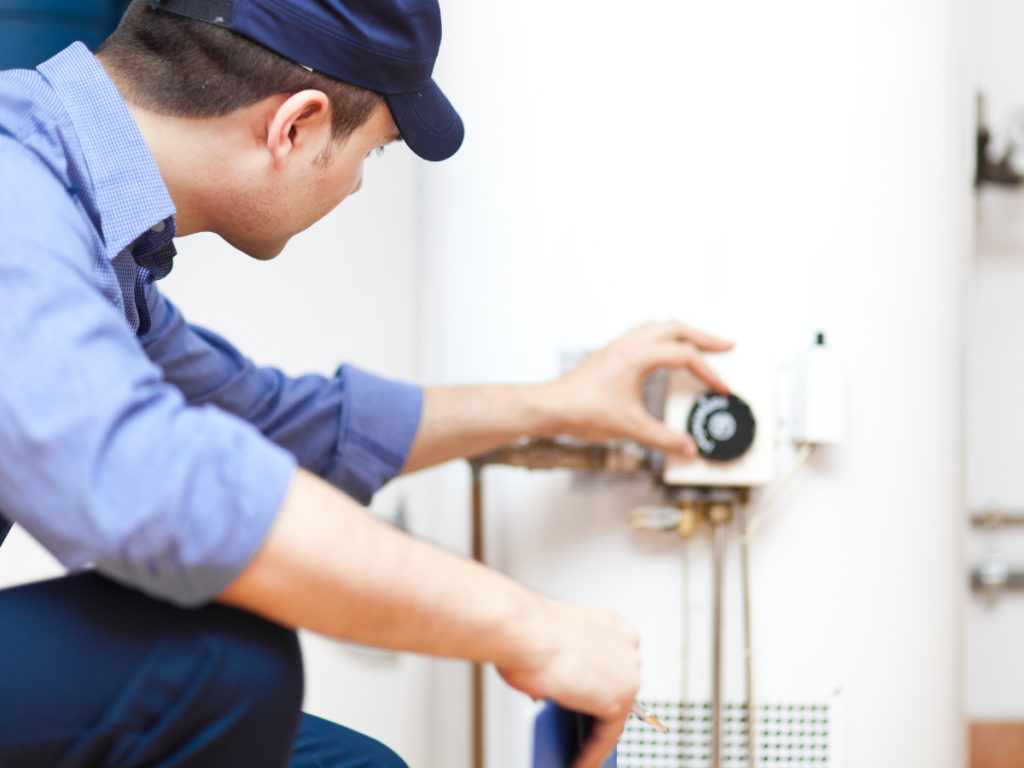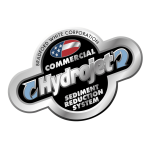Draining your water heater regularly is an essential (yet often forgotten) maintenance task, as it can save you from some big headaches down the road.
Over time, minerals and sediment can build up in your unit. This build-up can cause stress on your system, making it work harder than it needs to. This can potentially lead to costly repairs and even necessitate a system replacement.
Regularly flushing out your unit helps to remove this build-up, ensuring your system functions efficiently for a long, healthy lifespan. Plus, it could save you a chunk on your energy bills.
Here’s what information you need to know about flushing out your unit.
Understanding your water heater
Water heaters are a modern convenience that helps ensure access to hot water when needed most. In essence, it uses energy from either electricity, gas, or solar sources to heat cold water before distributing it throughout your home via your pipes.
Here’s how it works: picture a metal drum filled with water. This drum is insulated to keep the heat in. At the bottom is either an element (for electric heaters) or a burner (for gas heaters).
Turning on your thermostat begins the heating process. Once the desired temperature is reached, the heated water travels through pipes to be distributed throughout your home in showers, sinks, or wherever else needed.
Like any other home appliance, your water heater needs regular check-ups. In between that, it’s important to take steps to maintain its peak condition.
Different types of water heating systems
An abundance of water heating systems are available to homeowners today, each providing specific advantages. Let’s take a closer look at some of them.
Gas water heaters
Gas water heaters provide an efficient method for heating water stored in an insulated tank as long as natural gas is available in your home. These machines still work during power outages to ensure you always have access to hot water.
Electric water heaters
Electric water heaters are a bit like a coffee maker. These electric heaters use heating elements to warm your water, storing it in a tank until use. Although electric models may be more costly to run over time than gas ones, their installation tends to be much easier and doesn’t require a gas line connection.
Tankless water heaters
Tankless or on-demand heaters allow users to heat water directly without using a storage tank. After turning on the tap or faucet, cold water flows directly through a pipe into the unit, where either a gas burner or electric element heats it, providing you with access without having to wait for the storage tank to refill itself.
This system is ideal for those who love a long, hot shower experience.
Step-by-step process for draining a water heater
The draining procedure will depend on the type of system you have, varying for gas, electric, and tankless units. This procedure should generally be handled by a professional, but let’s go over what you can expect them to do.
Draining a gas or electric water heater
- Turn off the power: For a gas unit, turn off the gas supply. For an electric unit, ensure the power is switched off at the circuit breaker.
- Connect a hose to the drain valve: Your tank’s drain valve can be found near its base. Use a garden hose to discharge hot liquid safely.
- Open the drain valve: Start by slowly opening the drain valve to allow liquid to escape through your hose. Caution should be practiced, as it will be hot.
- Open the pressure relief valve: This is an important step. Opening the pressure relief valve ensures air can enter the tank, which helps with draining.
- Allow the tank to drain: Depending on the size and amount of sediment build-up in your tank, this process could take time.
- Flush the tank with cold water: Once your tank has been completely drained, switch on the cold water supply while leaving the drain valve open to begin flushing. This will help remove any remaining sediment.
- Close valves and refill the tank: Once the liquid flowing out from the hose is clear, close the drain valve and the pressure relief valve. Open the cold water supply to refill the tank. For a gas heater, relight the pilot light. For an electric heater, turn the power back on at the breaker once the tank is full.
Draining a tankless water heater
Tankless units require a different process due to their design. A professional will use a tankless water heater flushing kit for this procedure.
- Shut off the power: Make sure to switch off the power.
- Close the three water valves: These are usually located on the wall above or near your unit.
- Attach hosing lines: Connect your hosing lines to the water heater valves. The flushing kit should include these lines.
- Open the purge port valves: These are located on the hot and cold water valves of the heater.
- Flush with vinegar: Run the vinegar through the heater for about 45 minutes using a submersible pump in a bucket of vinegar. This helps descale the system and remove sediment.
- Close the purge port valves and remove the hosing lines: Once your system has been flushed, close all purge port valves and disconnect the hosing lines.
- Restart the system: Make sure to follow the manufacturer’s instructions for restarting the system safely.
Having a plumber regularly flush out sediment from your water heaters is not just a recommendation—it’s a necessity. Over time, sediment build-up can affect the efficiency of your heater, shortening its lifespan and even leading to potential damage.
It’s worth noting that neglecting this crucial maintenance task can result in higher energy costs, poor water quality, and a decreased volume of hot water.
While you may be tempted to search for do it yourself solutions, plumbing issues are always best handled by a professional, as they’ll have the tools and the problem solving skills to get your problem safely resolved.
Need assistance? Call Plumb-Tech today!
Don’t let sediment build-up disrupt your hot showers or hike up your energy bills. At Plumb-Tech, we’re ready to help you maintain the efficiency of your unit. Whether your water heater is making strange noises or you’re experiencing clogs in your system, we’re here to help. Our services are efficient and won’t break the bank.
Contact us to schedule professional water heater draining service today!





